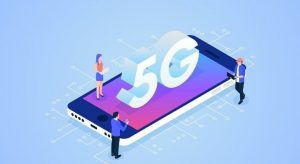It’s been nearly a decade in the making, and 5G is now a reality. Wireless carriers started rolling out 5G several years ago, and mobile 5G internet access is now widely available. But what is 5G exactly?
“5G is the 5th generation of mobile broadband that will eventually replace, or at least augment, your 4G LTE connection.”
What Can 5G Do?


With 5G, you get exponentially faster download and upload speeds. Latency, or the time it takes devices to communicate with wireless networks, will also drastically decrease.
5G networks are inherently more efficient, handling more connections per tower and faster speeds per user. 5G is also designed to work across a wider range of radio frequencies (RF), opening up new possibilities in the ultra-high mmWave (millimeter-wave) bands for carriers to expand their network offerings.
The evolution of 5G: How we got here
5G networks started to be deployed in earnest in 2019, but the groundwork for the next-generation network was laid many years prior. The architecture of the 5G standard was set forth on 2016, at which point every company and person involved from both the network and consumer side could start making devices that were 5G standard compliant.
Obviously 5G hasn’t yet hit total market saturation, or even represents a majority of mobile traffic yet. But looking back at the history of the 4G rollout we can get an idea for how long it will take. 4G (LTE) was first deployed commercially in 2009, and didn’t go live in the U.S. until the very end of 2010. It took until 2013 for 4G to be truly mainstream in many countries, and become dominant over the old 3G networks.
Following a similar timeline, we’re still waiting for perhaps late 2022 or even 2023 for 5G to be the dominant network in most countries around the world. And it will be for many of the same reasons: 4G faced similar technical hurdles as 5G, operating on new spectrum with new technologies required on both the network and device ends — though it too brought a substantial increase in speeds over the previous-generation network.
How does 5G technology work?
Now that we know what 5G technology is, it’s a good idea to understand how it works since it’s different from traditional 4G LTE. First, let’s talk 5G spectrum.


Just like 4G LTE, 5G technology operates on a wide range of radio spectrum allotments but is capable of running on a wider range than current networks. The most common form of 5G being used is called Sub-6, and there is also mmWave.
Sub-6 refers to 5G that operates at a frequency below 6GHz. All carriers have some form of Sub-6 network, primarily because 4G LTE currently runs on these lower frequencies. For example, T-Mobile has its low-band 600MHz spectrum and its previously Sprint-owned 2.5GHz both in use for 5G.
hen there’s mmWave (millimeter wave), which refers to the ultra-high-frequency radio waves, between 30Ghz and 300Ghz, that are used to supercharge 5G connections and deliver download speeds of multiple gigabits per second. Early on, Verizon relied exclusively on mmWave for its 5G network, though the carrier has now deployed a Sub-6 network too. While mmWave connections can deliver superfast download speeds, the high-frequency signals can’t travel long distances and can’t really get through obstacles — for the most part, even a window or leaves of a tree can block the connection.
Guests can take a four-wheel drive tour into the hills to tour the vanilla plantations (US$ 65) or view French Polynesia’s rare jewel, the black pearl, at the Motu Pearl Farm (US$ 64). From there, head to the lagoon for some quality time with the region’s underwater fauna. There is even a small lagoonarium where rays, turtles, sharks and fish are enclosed in four different pools.
Where is 5G coverage available now?
All of the major U.S. carriers are working furiously to build out 5G networks, yet deployment across the entire country and other countries of the world will nonetheless take several years.
It’s also worth noting that each 5G carrier has a different 5G rollout strategy. This means your 5G experience may vary greatly depending on your carrier.









